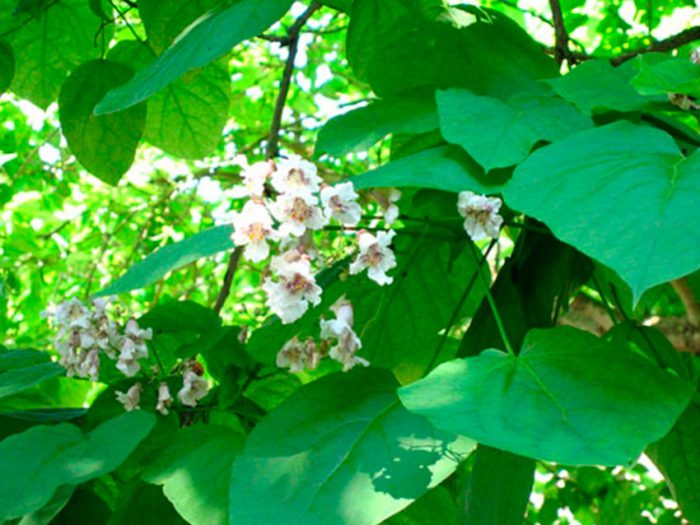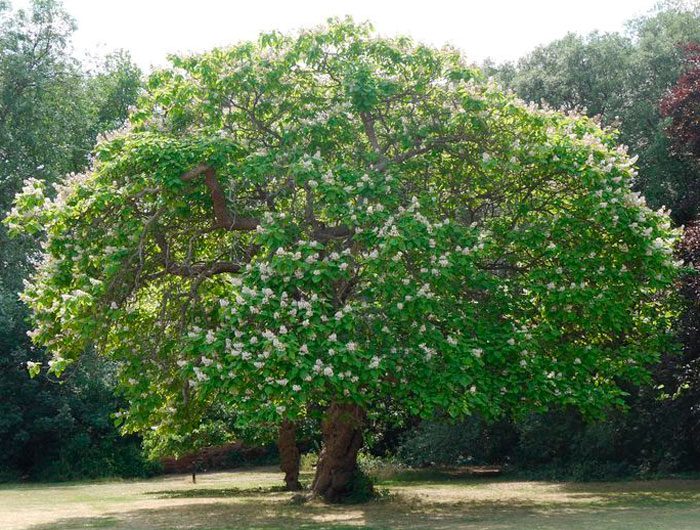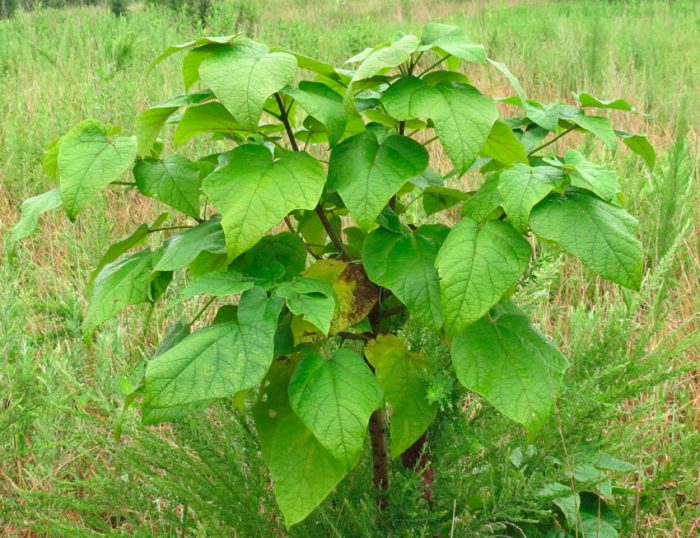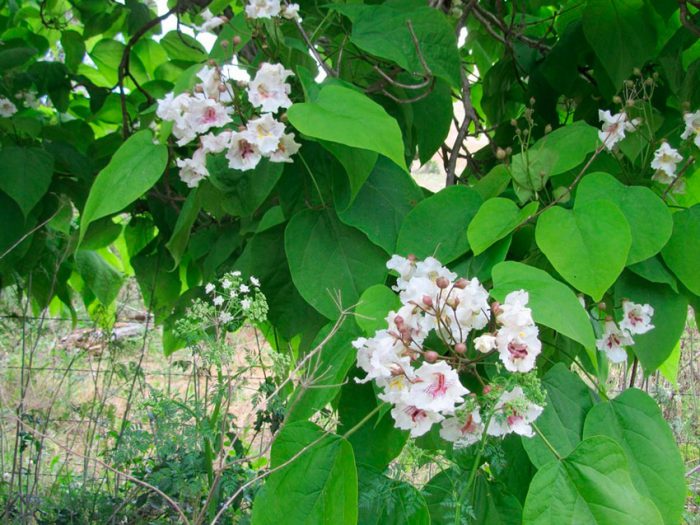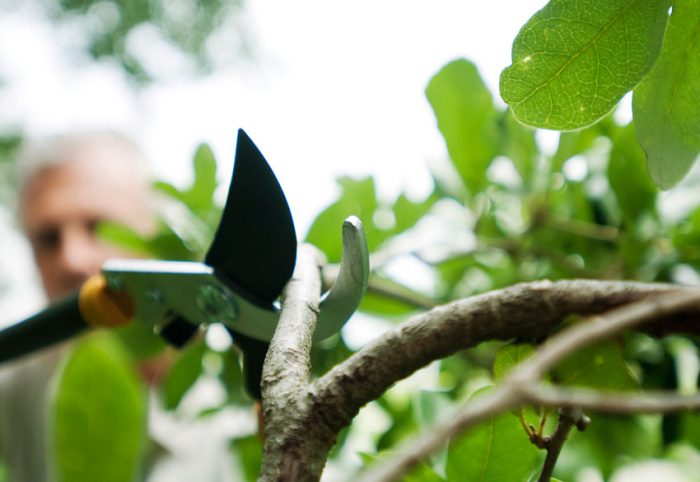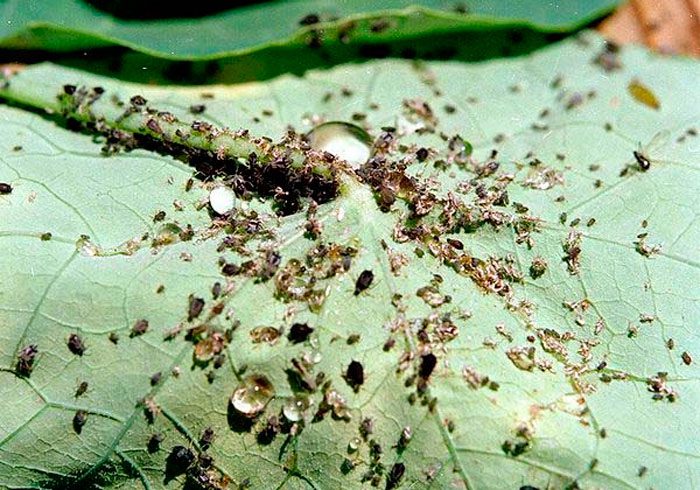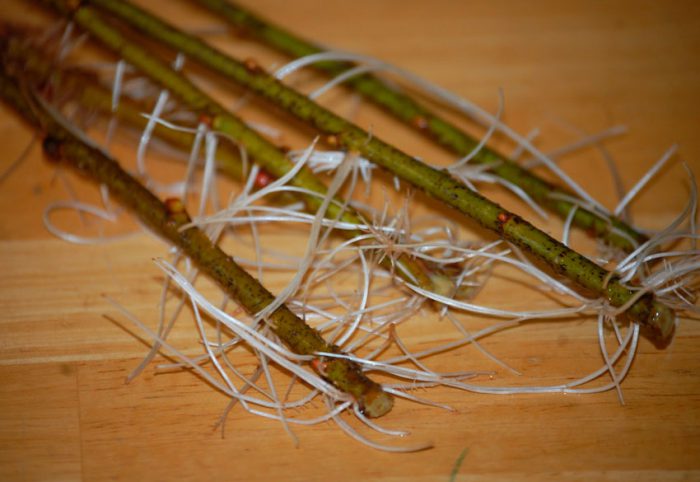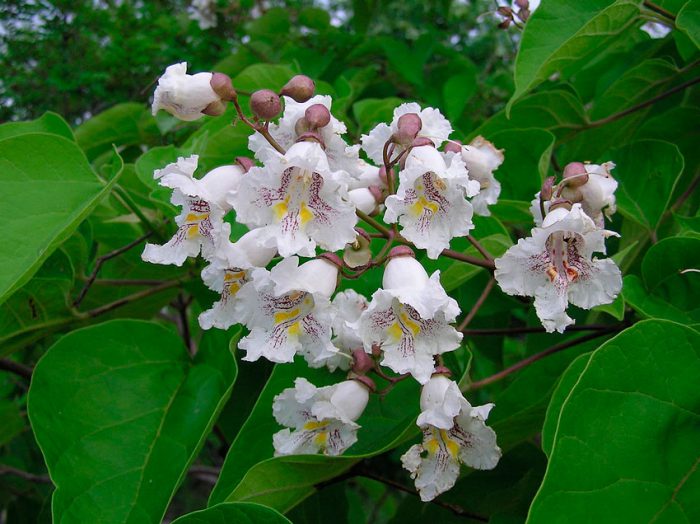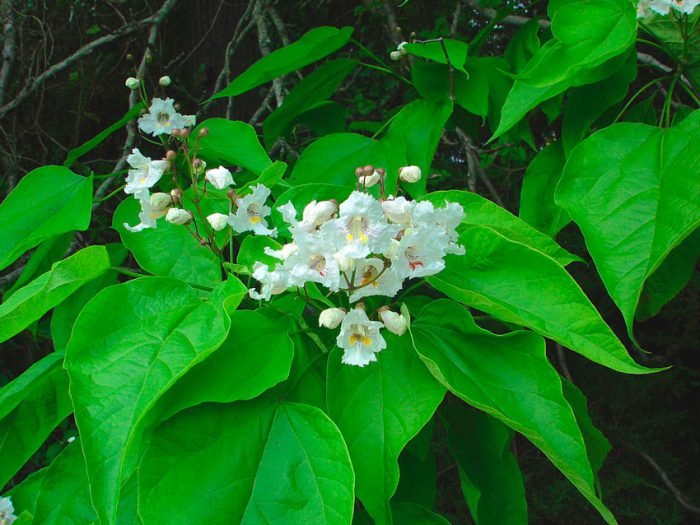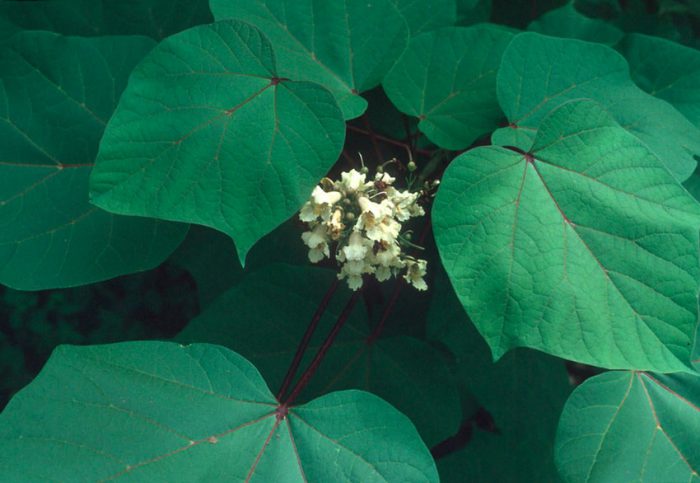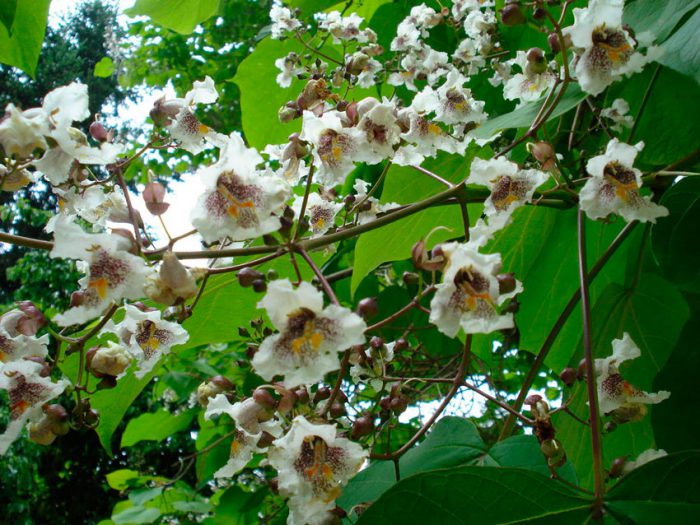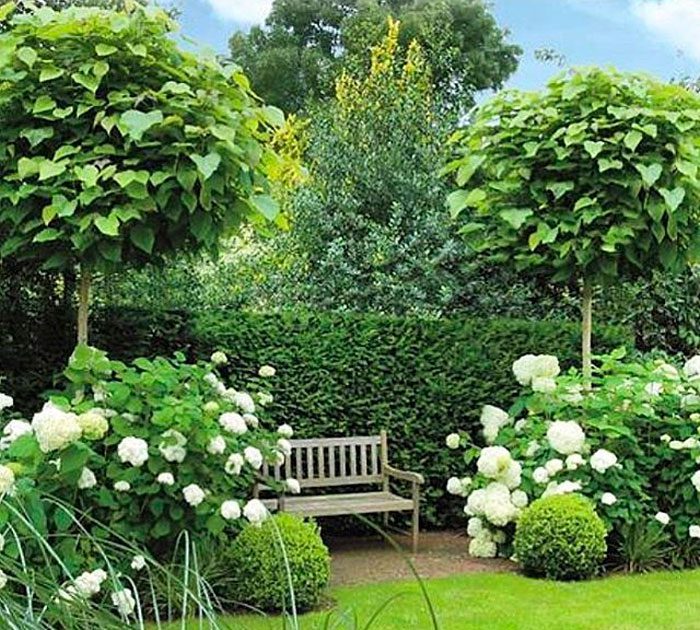Catalpa (Catalpa) is a representative of the genus Bignonium. In the wild, such a plant can be found in the West Indies, China, North America and Japan. The type of catalpa bignonium has long been used by the Indians as a medicinal plant in the treatment of whooping cough and malaria. They called this plant "katoba", and the botanist and physician from Italy Scopoli, who was the first to describe this genus, without malicious intent slightly changed the Indian name to "catalpa". This genus, according to various sources, unites approximately 10–38 species. Certain species are cultivated as ornamental plants in various parts of the planet Earth, for example: in Belarus, Ukraine and southern regions of Russia.
Content
Features of catalpa
Decorative catalpa is a very beautiful evergreen or deciduous tree, the height of which does not exceed 20 meters. The shape of the crown is round. In most species, leaf plates are oppositely located, whorled are also found, they have long petioles and a heart-shaped shape, their size is approximately 30x17 centimeters. This tree blooms very effectively. The length of fragrant flowers is about 7 centimeters, they have a funnel-shaped shape and a cream or white color, specks and dots of dark color are located in the throat. Flowers are a part of erect pyramidal paniculate inflorescences. The fruit is a pendant pod-shaped capsule, the length of which reaches 0.4 m. Inside these fruits there is a huge amount of flying seeds. Such a plant blooms in the second half of June or the first days of July, while unusual fruits do not fall from the tree throughout the entire winter period.
Planting catalpa in open ground
And it is necessary to plant catalpa and take care of it in the same way as for any decorative tree. In nurseries or garden centers, one-year or two-year catalpa seedlings are available for sale. Landing in open ground is carried out in the spring, before sap flow begins, or in the fall, when leaf fall ends.For planting, you need to choose a well-lit area that has reliable protection against gusts of wind, the fact is that large and extremely fragile leaf plates of such a tree are easily injured in a draft. It is very good if in the selected area the occurrence of groundwater is as deep as possible. This plant needs space, therefore, a distance of 4 to 5 meters, no less, should be kept between the seedling and any other plant. The depth of the planting hole should be 100 centimeters and the width 70 centimeters. Prepare the soil mixture to fill the hole, for this combine humus, leafy soil, sand and peat, taken in a ratio of 3: 2: 2: 1. This mixture should be combined with 5–8 kilograms of wood ash and 50 grams of phosphate rock. This soil mixture should have an acidity of 6.5–7.5.
At the bottom of the planting pit, you first need to make a drainage layer, the thickness of which should be 15 centimeters. Crushed stone or broken brick can be used as drainage material. After that, the pit should be covered with a soil mixture saturated with nutrients almost to the top. Then the root system of the seedling must be placed in it, then the hole is completely filled with the same soil mixture. After the soil is slightly compacted, the plant needs to be watered abundantly. During planting, try to keep the root collar of the tree slightly above the ground. Moreover, when the water after irrigation is absorbed into the soil, the root collar of the catalpa should drop to the ground level. Do not forget to mulch the trunk circle with any organic material after watering (peat works well).


Watch this video on YouTube
Catalpa care
Catalpa belongs to moisture-loving plants, in this regard, it must be watered once a week, especially in a hot and dry period. In the event that the tree feels a lack of water, then its decorative effect will greatly decrease, since the leaves will lose their turgor and sag. For 1 adult catalpa for 1 watering, 20 liters of water are taken. In the event that the summer period turned out to be damp or cool, watering can be reduced to 2-3 times a month. The same amount of watering is required for a plant with a mulched trunk circle. After rain or watering, it is recommended to loosen the soil surface in the near-trunk circle to a depth of 0.3 m, while weeding. If there is a prolonged drought, then the number of irrigations must be increased.
Top dressing
Do not forget to systematically feed the tree. To do this, it is necessary to add a solution of rotted manure (1:10) to the soil, while for 1 adult tree from 5 to 6 liters of nutrient mixture is taken. This feeding is carried out 2 times per season. In the spring, it is recommended to feed the catalpa with Nitroammophos, and in the fall - with phosphorus and potassium fertilizers, at this time it does not need nitrogen.
Pruning
Pruning is recommended in the spring before the buds swell. During this procedure, you should cut off all injured, dried, damaged by frost, diseases or pests of the branches. The formation of a tree, as a rule, is carried out with a stem height from 120 to 200 centimeters, above it the plant branches into a spreading low crown of 4 or 5 skeletal branches. After some time, if necessary, the skeletal branches of the plant are shortened, while the thickening stems and branches must be removed.
Diseases and pests
Catalpa is highly resistant to both diseases and pests. But in the case when the plant is very weak, spanish flies can settle on it. In order to destroy them, you will need to treat the plant with pyrethroid 2 times (Fastak or Decis). Stem pests - hornetails can also settle on this plant, they are hymenoptera insects, while their adults are outwardly very similar to hornets. The wood of such a tree serves as a place for egg-laying by adult females.After some time, larvae emerge from them, making holes in the wood, and then clogging them with drilling flour. Catalps infected with such larvae greatly weaken and gradually dry up. Most often, specimens affected by the horntail die, but it should be remembered that if the tree is completely healthy and strong, then no pests are afraid of it.
Catalpa can suffer from verticillary wilting (wilt), in this case, from the middle of the summer period on the lower part of its crown, you will notice yellowing, drooping and death of leaf plates. Such a fungal disease is quite serious, often because of it the tree loses leaf plates on only one side and looks one-sided outwardly. If the disease is just beginning to develop, then the plant can be tried to heal, for this it should be watered under the root with Rovral or Maxim, and also treated with Fundazol or Topsin-M. For prevention purposes, trees can be sprayed with fungicides such as: Quadris, Previkur or Falcon.
Growing in the suburbs
In the event that you are going to cultivate such a tree in the middle lane, then frost-resistant species and varieties should be chosen for planting. The greatest frost resistance is possessed by such a species as magnificent catalpa. In middle latitudes, it is still possible to grow bignoniform and ovoid catalpa. Also, the following varieties are suitable for cultivation in the Moscow region:
- Aurea. The foliage is golden.
- Pict. The color of the leaf plates is variegated, variegated.
- Nana. This compact form is non-flowering.
- Captivity. The flowers of this variety are double.
In order for the cultivation of catalpa to be successful, it is necessary to remember several important nuances. For planting, you should choose a sunny area, while the soil should be wet loam of a neutral reaction. Catalpa should be located in dense conifers or on the south side of the building. For the first 2 or 3 years, the plant needs mandatory protection from gusts of wind, and it should also be well covered for the winter. Older specimens belonging to winter-hardy varieties do not need shelter for the winter. In the event that they do freeze too much, then with the onset of the growing season they will be able to fully recover quite easily.
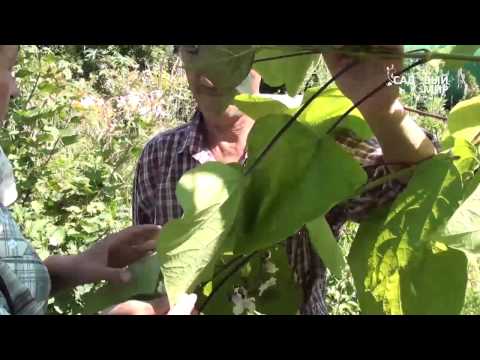

Watch this video on YouTube
Reproduction of catalpa
For reproduction of catalpa, a generative (seed) method is used, as well as a vegetative one - cuttings. Seeds do not need stratification before sowing.
How to grow from seeds
Seedlings are sown in February or March. Immediately before sowing, the seeds should be immersed in lukewarm water for 8-12 hours. Sowing can be done in autumn, but the seeds should not be soaked. In the substrate, grooves need to be made into which the seeds are then laid out, they should be sprinkled on top with a layer of soil. The container is covered with glass or foil, and removed to a warm (from 20 to 22 degrees) and well-lit place. Do not forget to protect crops from direct sunlight, and provide them with systematic ventilation and watering. Seedlings that have grown stronger during the winter are planted in open soil in spring, when the threat of return frosts has passed (approximately from mid to late May).
Cuttings
Cuttings should be harvested in the second half of the summer period. The length of the cuttings is approximately 8 centimeters, and several buds should be present on them. For their preparation, adult specimens should be selected. For rooting, the cuttings are planted in a soil mixture consisting of sand and peat, and then covered with a transparent cap on top, which will help create the necessary greenhouse effect. You need to take care of the cuttings in the same way as for the seedlings. You can understand that the cuttings are completely rooted by the young leaf plates that have appeared.They are planted in open soil from mid to late May.


Watch this video on YouTube
Types and varieties of catalpa with photos and names
Only a small number of catalpa species are cultivated by gardeners. They will be described below.
Common catalpa (Catalpa bignonioides), or bignonioid catalpa
In the wild, it can be found in North America, this species prefers to grow on river banks. The height of such a plant can reach 20 meters. The spreading crown has a wide-round shape. The color of the thin-lamellar bark is pale brown. In such a tree, the leafy plates of a pale green color deserve special attention, outwardly they are very similar to lilac foliage, but they are larger. Their length reaches 20 centimeters, and their width is up to 15 centimeters. Their front surface is naked, and the seamy side is pubescent along the veins. If you grind such a leaf, then you can smell a not very pleasant smell. The length of the fragrant white flowers is about 5 centimeters, in the throat they have two yellow stripes, and on the surface there is a brownish-red speck. They are part of loose pyramidal inflorescences, which reach 20 centimeters wide and 30 centimeters long. The flowering period is approximately 20 days. The fruit is a narrow, long (about 40 centimeters) pod-shaped box, inside there are small seeds. Cultivated since 1726. Decorative forms:
- Aurea (gold)... The color of the foliage is deep yellow.
- Kene... Yellow leaf plates have green veins and a speck of dark color in the center.
- Low (nana)... This bush form has a spherical crown.
Catalpa speciosa, or beautiful catalpa
The homeland of this species is the eastern region of North America, such plants prefer to grow on the shores of rivers and lakes. The height of this spectacular tree does not exceed 30 meters, the shape of the crown is wide-pyramidal. On the surface of the slender trunk is a thin-lamellar gray bark. The front surface of the green glossy long-petiolized leaf plates is smooth, they reach 30 centimeters in length and 15 centimeters in width. They grow somewhat earlier than other types of catalpa. There is a slight pubescence on the seamy surface of the leaves. The fragrant, cream-white flowers reach 7 centimeters in length and have a wavy edge, on their inner surface there are a pair of yellow stripes and brownish-purple dots. They are part of wide panicle inflorescences, the length of which varies from 15 to 20 centimeters. The fruit is a very long (about 0.56 m) capsule, which, after ripening, cracks into two leaves. It has been cultivated since 1800. The most popular decorative form is powdered or powdery: on the surface of the leaf plates there is a large number of spots of white and cream color.
Catalpa ovate (Catalpa ovata)
Originally from Central China. The height of such a tree is about 10 meters, but when grown in a garden, it rarely exceeds 3.5 meters. When cultivated in middle latitudes, such a catalpa often freezes over, therefore its height in this strip is no more than 150 centimeters. Fragrant cream-white flowers have a purple pharynx. They are part of panicles up to 25 centimeters long. The fruit is a long (about 0.45 m) pod-shaped box. This species is distinguished by its light-requiring, it also needs nutritious and moist soil.
Catalpa fargesii
In nature, it can be found in Western China in warm forests. The height of such a deciduous tree does not exceed 20 meters. Opposite single-edged simple leaf plates that look similar to lilac foliage, have a green color and ten-centimeter petioles. On their front surface there is not so dense pubescence in comparison with the purl.The length of purple-pink or pink flowers is about 35 mm, on the inner surface of the corolla there are specks of dark purple color. Paniculate inflorescences consist of 7-15 flowers. This species blooms 4 weeks earlier than other types of catalpa. Such a tree is highly decorative.
Catalpa hybrid (Catalpa hybrida), or spherical catalpa
This hybrid was created by crossing the ovate catalpa and the common catalpa. Such a plant reaches a height of 16 meters and has a rounded crown. Large pale green leaf plates on the lower surface are pubescent. If you grind such a leaf, then you can smell a not very pleasant smell. Large, loose inflorescences consist of flowers reaching a length of 25 mm. This type is the most popular in landscape design.
Catalpa in landscape design
Catalpa is distinguished by its rapid growth, resistance to unfavorable conditions, as well as its unpretentiousness. Such a tree can be used for alley planting, as well as as a single plant, planting in front of an office, cafe or shop. Such a plant can be planted along the coastline of any body of water. If, when planting, you combine various types of catalpa (for example, with purple and golden leaf plates), then you can achieve even greater decorativeness. Since this tree is resistant to gas pollution, it is increasingly used for landscaping city streets. In the parks of the city you can see catalpas, which are surrounded by a hedge made of cotoneaster or hawthorn, such a "composition" looks very impressive throughout the season.
In gardens and dachas, magnificent and bignoniform catalpa are most often grown. Such a plant is a bright accent of the general landscape. To increase the decorativeness of this tree, it is recommended to plant it next to deciduous magnolias or oaks. To decorate a small garden or a local area, experts advise using not very high varieties of such a plant, for example, nana.

